It’s hard to match an iron cast skillet when it comes to rustic cooking. Cast iron cookware is rustic and elegant, and bloggers have created countless cast-iron meals that are just perfect to look at on social media. It can go in an oven, directly to a table. However, if you put attraction on the back burner, you will find countless options for everyday cooking. There is a long debate on cast iron Vs stainless steel and here are a few outcomes from it.
It is hard to compare stainless steel with cast iron in terms of aesthetics and deciding on cast iron Vs stainless steel is a tricky option, but here are a few basics that will help you choose better.

Table of Contents
Cast Iron Vs Stainless Steel – Understanding Basics
To help you find that which you need in our kitchen, we will compare different features of the two types of materials: – Cast Iron Vs Stainless Steel. May it be the construction or the process to clean it up, finding the right option is crucial.
Before deciding, it is important to understand the raw materials that each of these cookwares is made of. That can enable you to understand what is right for you and your home. The higher the carbon content, the better the strength of the utensil. It simplifies casting iron than casting steel, and is simpler to pour when molten, and does not shrink than steel. With complex vacuums in molds, the casting iron is thus suited to complex structures and less molten material is necessary. Cast iron is sometimes used in projects like fencing or patio furniture.
Cast iron is more quickly machined in similar lines than stainless steel, making it easier to cut or polish than stainless steel. Cast iron is, in most situations, cheaper than stainless steel. As the product prices, electricity, and labor requirements are much lower than stainless steel. Raw steel costs more to buy and takes longer and more energy to cast. It can only be a short-term cost review. For any project, both the robust nature of cast steel and the costs of substitute parts should be significant.
In some instances, stainless steel casting can be cheaper in the long run, but at a higher initial cost. For a broader understanding of Cast Iron Vs Stainless Steel, you also have to identify their features and properties.
Cast Iron
Cast iron is an extremely durable material for cookware. Utensils made using cast iron lasts for years and don’t need over-the-top maintenance. Not only that, cast iron skillets can be used not only in the oven but also on a stovetop and a grill as well. Some studies found that food tested contained considerably larger nutrient levels when cooked in the iron pans, the researchers found.
Their findings state that the increase in iron depends on the food’s cooking time and water. While you do not rely on it as the primary nutrient source, you do receive a little boost.
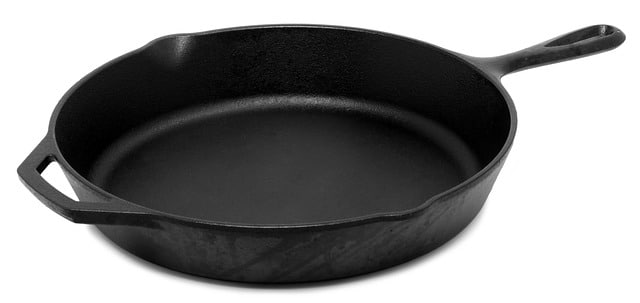
Stainless Steel
In comparison to cast iron, stainless steel panels are non-reactive. This means they won’t alter the food’s chemical structure or taste. So it is easier to prepare your sauces for tomatoes, or intense citrus sauce. Because of its longevity and comfort, many chefs and restaurants use these kinds of pots. These are also lighter in weight in comparison to cast iron utensils.
But they can be very hard to clean if burnt or used badly. Steel does not heat up quickly, so it can take some time to get it heated. You want to make sure that your pan is warm enough before adding any cooking oil. You can then add the oil followed by food when the temperature is right. You can create a temporary non-stick surface by letting it heat up until you cover the pot with oil.

About The Materials
Cast iron cookware has a long history and remains relatively low-tech cookware. Cast iron molten – an iron alloy with a minimum carbon content of 2-4% – is adequately fed into a mold that cools it and hardens the desired shape of a pot or bowl.
Steel is an iron alloy, but one of the lower carbon content than 2 percent. Manufacturers add chromium to standard steel by at least 10.5% to produce rust and corrosion-resistant. It is unreactive (usable with no ingredient) and is robust stainless steel.
Most cookware of stainless steel is not stainless steel. The best combination of stainless steel as a weak thermal conductor is with thermal material. It can be aluminium or copper. You can mount it either in the middle or at the bottom of the sprinkler. The coating of three or five-fold layers is a feature of many of the high-quality cookware brands.
Related Reading:
Cast Iron Vs Stainless Steel – Differences Based On Cooking
Cast iron is a pan that is best for the selection of cooking for many purposes — it takes time to heat up, and is heavy. There are several health benefits as well in cooking in iron pots. At the same time, quick cooking is enjoyable, and long cooking times are useful for seasoning the cast iron. Besides, the flavor it adds to food is prevalent. A well-experienced cast iron produces a light patina, which generates a non-stick coating.
Before you start cooking, you must preheat cast iron pans — this will cause the food to stick with cold cast iron. The dense material appears to heat unevenly so that it can take a little longer. Best way to start with medium-low heat when cooking is to gradually through. Nevertheless, if a cast iron pot heats up, the heat is very well retained. This is why cast iron is preferred in cooking methods such as roasting, baking, and for dishes that need to transfer from stovetop to oven. It is ideal for low or slow cooking.
Any foods in cast iron aren’t perfect for cooking. The iron surface interacts with acids, such as tomato sauce and wine. This can happen after long cooking hours. It can convey a metallic taste to your dishes, although it is not dangerous. Often, cooking seafood or pungent dishes is not recommended, because the oils of the preceding dishes remain on the surface.
As a cast iron pan cannot be scrubbed, again and again, you may not like the taste of your fish filet tomorrow, though you are enjoying it today.
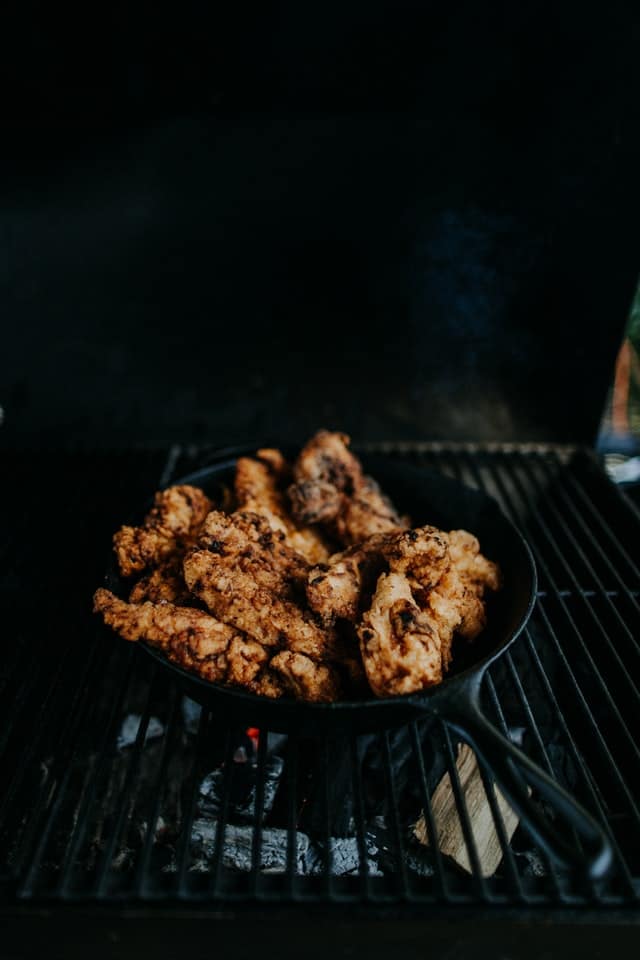
Components Of Cast Iron Vs Stainless Steel
You also need to understand about components of Cast Iron Vs Stainless Steel. The part consists of both iron and steel. Yet their production is a bit tough as various metals and alloys application takes place. Since both the metal and the cast iron are mainly from the iron element (Fe), the difference between the original and the iron is essential. The elementary iron, which extracts by intense processing called melting, is present in nature as a mineral.
Carbon is the most critical component mixed with it for use. It is too soft to be useful for essential purposes because of pure elemental iron. This carbon separates cast iron from steel. This carbon separates Cast iron consists of 2% of carbon and 0.1% to 0.5% of carbon in the steel. On the other hand, it is a relative breeze to cook with stainless steel.
You have to preheat the pan with medium heat for a few minutes to better cook with stainless steel. One easy way to see if the pots heated enough is to sprinkle in the water. You are ready to cook if the sea forms tiny beads jumping across the area. Corrosion means the oxidation of more chemically stable compounds like oxide or hydroxide. It is of hardened metal like cast iron or steel. Rust, also known as iron oxide, occurs when ferrous material corrosion starts up. Corrosion degrades the material’s useful properties such as energy, look, and sound.
Related Reading:
In our case, revolutionary steel is more corrosive than iron. Cast iron helps in protection from corrosion by a protective film on it. In the event of moisture, they will oxidize both. Therefore it is essential to maintain regular maintenance to prevent coronation.
The benefit of inox steel is that you can see how “sensitive” the surface is.
Do you make a crooked bite? The oil will have one or two teaspoons.
Whip an omelet for cheese? Coat the pot and pour out the excess of about 1/8 inch of oil.
Give a cup of paper a good wipe, and you have created a stainless steel surface that is relatively non-sticky. This versatility makes inox pans perfect for all forms of food: pan sauces, potatoes, searing pans, and the fastest everyday dishes.
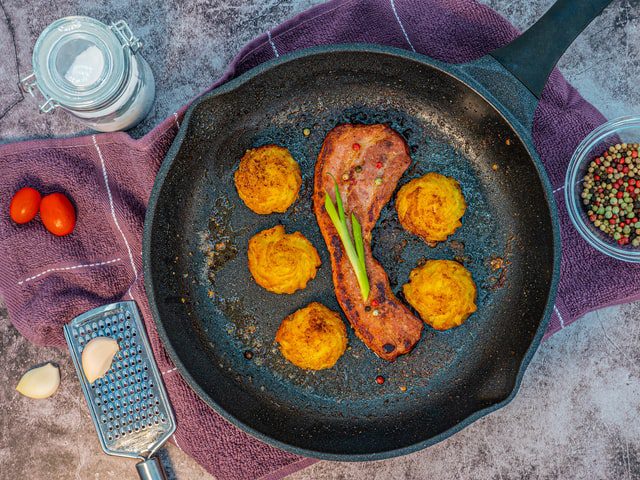
Machinability
This is its machinability the properties of a material that allows it to form quickly whether cut, boiled, or ground. In other words, machinability is the ease with which metal manufacturing happens in a satisfactory finish with a low cost.
We’ve already talked about molten metal casting into molds. It is usually used for making components of the machine. You might imagine that cast iron would be much simpler to process because stainless steel would be less shrinkage and less melting point.
Vibration Damping
During the construction process, metal can lead to excessive noise and vibration because of the lack of damping power. Therefore it is essential to find the vibration damping of cast iron and stainless steel. The flattened shape of a cast iron graphite structure is suitable for vibration absorption and reduces noise.
Vibration reduction decreases tension and avoids system wear. The tendency to damp steel, on the other hand, is much lower than iron. These are usable for advanced machines or other machine parts that create less vibration.
Resistance To Impact
Cast iron has surpassed its versatility and advantages in terms of ductility and force to date. On the other hand, stainless steel is superior to all the rest. For strength and ductility, steel is the option because you can resist it without deforming, cracking, or splitting. It can also withstand high stresses without fractures and strain forces.
On the other side, cast iron, because of its ductile design, deforms without failure with high effects. It has only a small range of uses because steel utility is popular worldwide. Now maybe you can get better details on Cast Iron Vs Stainless Steel.
Cast Iron Vs Stainless Steel Based On Cleaning
While cast iron does not need to be technically cleaned with water and soap, you need a little more maintenance. Bare cast iron might be usable straight out of the box. Clean, brand new cast iron should be hand-washed with soap and warm water. While cast iron does not need to be hand-washed. An initial wash is vital to remove any residue or material left from manufacture.
Hand season the iron with a fine layer of oil on the whole of the surface ( e.g. potato, sunflower, or flax oil works well), using paper towels. Do not let dry iron, as cast iron tends to rust quickly. Place the pot upside down on your oven’s middle, and bake for an hour at 375 degrees Fahrenheit. The pot is ready to cook until it’s cold.
Related Reading:
To remove any food bits and oil, use a towel first. Then clean the pot under hot water. Place the pan dry — don’t dry, because cast iron can rust. This can be until all the humidity has evaporated. Use a paper towel to extend the oil over the whole surface until completely upset. Now put it in about half a teaspoon of oil once dry.
As you would imagine, it is much simpler to preserve stainless steel. Although many brands label their cookware as spare, it is still relatively easy to wash hand stainless steel. Either use warm soapy water and a soft sponge for this purpose. You can also use a mild cleanser with a plastic scouring pad like Bar Keeper’s Friend for more difficult tasks. Before processing, dry your cookware, and you’re done.
Stainless Steel Pans Are Easy To Clean
Cast iron can be beautiful, but maintenance is a little bit high. You must also make sure you clean it and keep the oil spice up because you can buy cast iron cans before the seasoning.
It is super quick to clean our inox steel cups. Please visit our guide on steel treatment for a full tutorial. You have to cool and wash them with a gentle cleaning pad (skip steel wool!) and make them fresh. To save you the hassle, and you can make your paste with soda.

Stainless Steel Pans – Good Conductor Of Heat
See how cast iron is in the middle when there is the evenest heat pattern in the 5-ply stainless steel bottle? The iron chops at the heat source are going to build hot spots. It will also take a long time to heat than a steel bowl. As far as heat resistance is relevant for Cast Iron Vs Stainless Steel, opting for stainless steel is a wise choice.
Our 5-layered stainless steel and aluminum pot offers the best surface for searing meats and standard cooking. It also includes pan-sauces and risottos. Your pot is also cooked at a lower heat in less time than when you stick with cast iron.
What To Cook On Cast Iron?
While we like the flexibility of cast iron fittings – they are usable on a grill, in the oven, or even over a campfire.
Given the acidic reactivity of cast iron, it is better not to cook acidic food. This can streak the seasoning and give an unwelcome metallic flavor in a cast-iron pot. Tomatoes and sauces can change their flavors. If you’ve cooked tomato-based pasta sauce or shakshuka in an iron cast pot by mistake, your safety is not affected by the bad taste.
So how you use your iron cast are pan?
It is better to cook slowly, roast, and otherwise make plates that require removal between the oven and the stovetop. For a couple of minutes, I can’t tell you how I like to sear thick pieces of meat on a hot cast-iron pot, then slowly slip them into the oven. It remains an incredibly well-preserved cooking vessel, with seasoning gourmet steaks, crispy, well-exhibited and soft, juicy inside, considering its heftiness.
Cast iron might be feasible to cook grandmother desserts. It can include buttery desserts with a crispy edge without too much baking expertise from classic desserts.
The appearance is even better–a steaming-hot, beautiful galette in a cast iron is an excellent subject at a brunch table on Sunday.
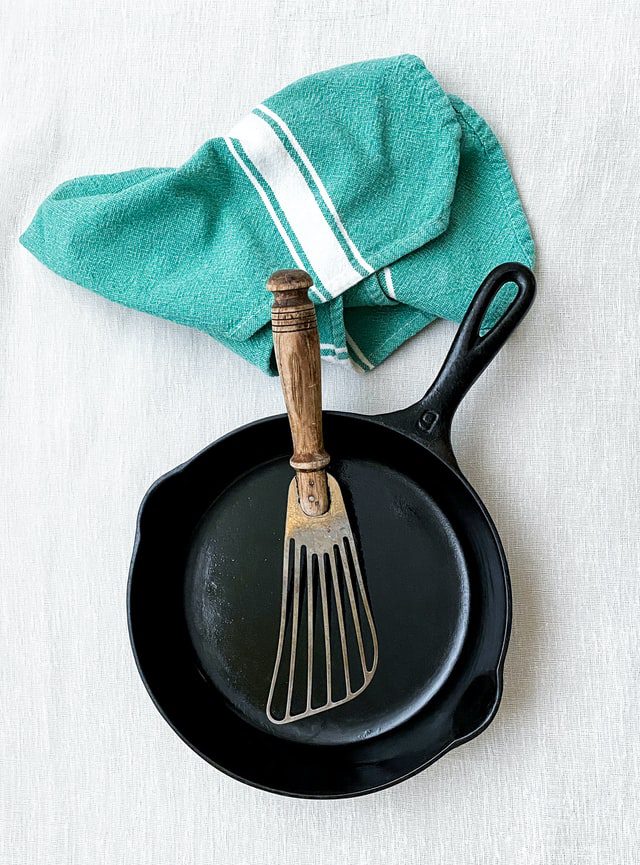
What To Cook On Stainless Steel?
Easy and uniform heating of stainless steel cups, especially those with a copper core, and cooking tasks such as the seating of delicate meats and sautéing are various. While some beginners can worry about food sticking to the bowl, there is an excellent way to avoid seasoning. For home cooks, it can also be the perfect weeknight cooking tool because of its low maintenance requirements.
A good cast iron cup will last you decades with proper maintenance at a cost-effective price. On the other side, a fully enclosed stainless steel pan is much more costly but long-lasting.
Each type of carbon and sometimes other metals contain a certain percentage to obtain the desired functionality. Chromium and copper coating can make it rust and corrosion-proof. Other advantages are durable and thermal safe in a high-quality stainless steel pan such as All-Clad. However, people who are Nickel sensitive should avoid stainless steel cooked food. This could help you to decide on Cast Iron Vs Stainless Steel.
Cast Iron Vs Stainless Steel has several similarities. Both are long-lasting, flexible, and give a fantastic sear to your food. Because the heavy material needs tremendous muscle maintenance, the delicious food you can cook with can be worth it. However, a cast-iron pot can easily replicate as a lovely serving plate with its cool, rustic charm.
Stainless steel can sear, jellyfish, poach, caramel, bake, etc. Therefore, cleaning of a steel pot in minutes when all the plates are done. Most of that metal in the kitchen may be steel, which provides a range of benefits.
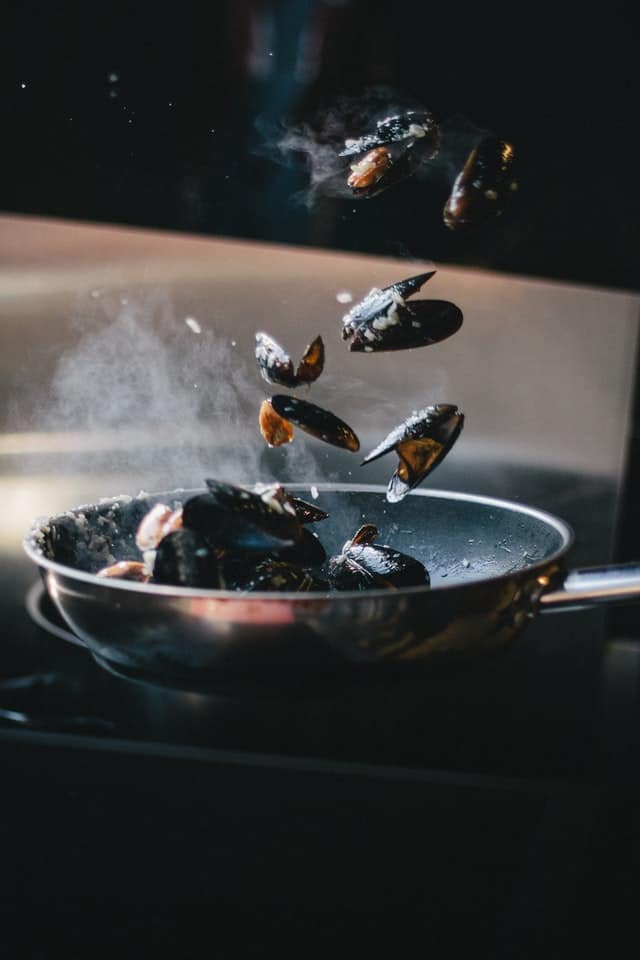
Winding-up
Cast Iron Vs Stainless Steel are two of the best when it comes to cooking surfaces. Each of them has its advantages and a significant kitchen venue. Nonetheless, most home cooks can consider inox pans an excellent option for most of the pots and pans in their kitchens.
The longevity, maintenance, and regular use of stainless steel are a perfect addition to your cookware. But if you feel that the cast iron does not offer a durable life or requires a lot of Cleaning, then it is a better option to cook in a stainless steel pan.
A stainless steel pan is also a better option, as it will consume less oil and is the best companion of the diet-conscious generation.


